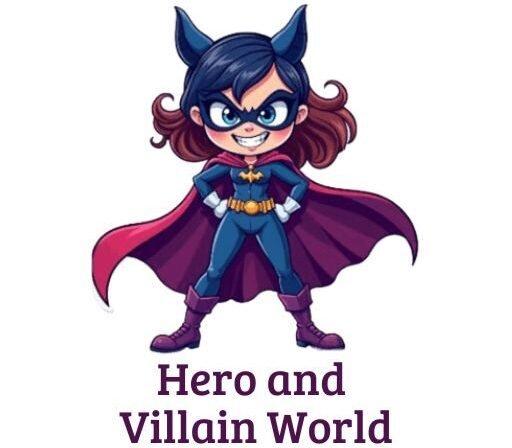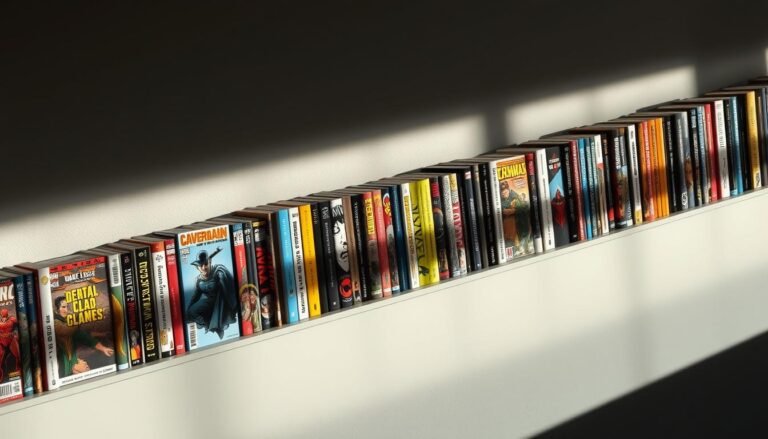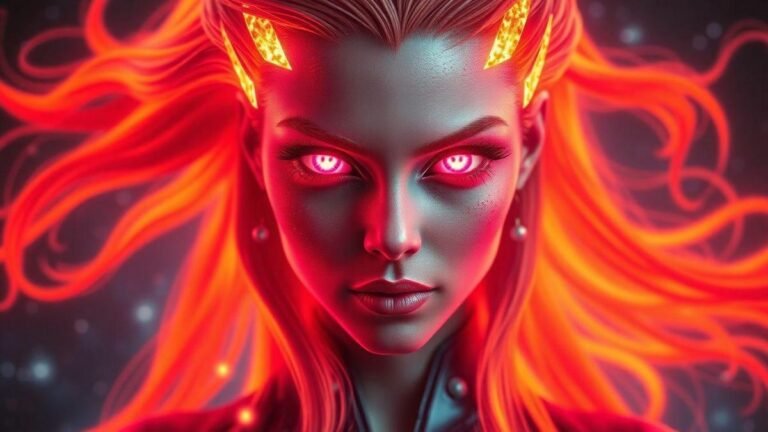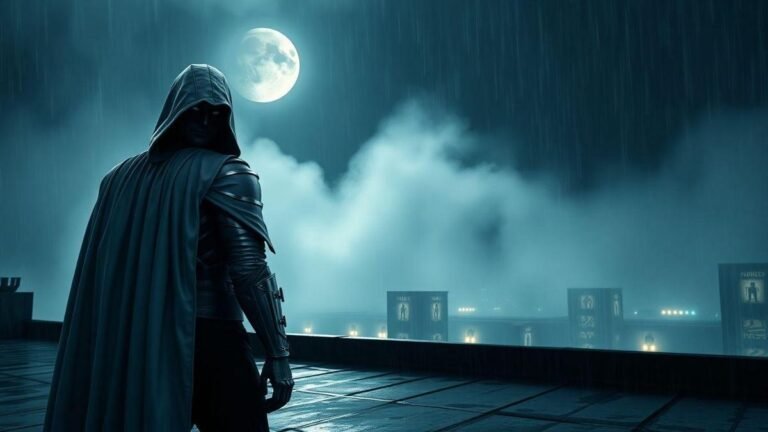Iron Man’s Transformation: From Playboy to Protector

Get a close look at Tony Stark’s origin, the first suit that sparks his shift, and how technology forces hard moral choices. Learn what the suit taught Tony about limits and duty, trace his redemption from flashy playboy to steady protector across comics and films, and spot the key moments of heroism and personal growth.
Finally, see why responsibility reshaped the modern hero and how his legacy echoes in culture and tech debates.
Note: the phrase Iron Man’s Transformation: From Playboy to Protector is used throughout this article to describe the arc and its influence on storytelling and ethics.
Key Takeaway
- Growth: from selfishness to selflessness.
- Tech as tool and threat: use it to protect, not profit.
- Learn from mistakes: accountability matters.
- Duty over pleasure: choose responsibility.
- Lead by example: actions, not words, define a hero.
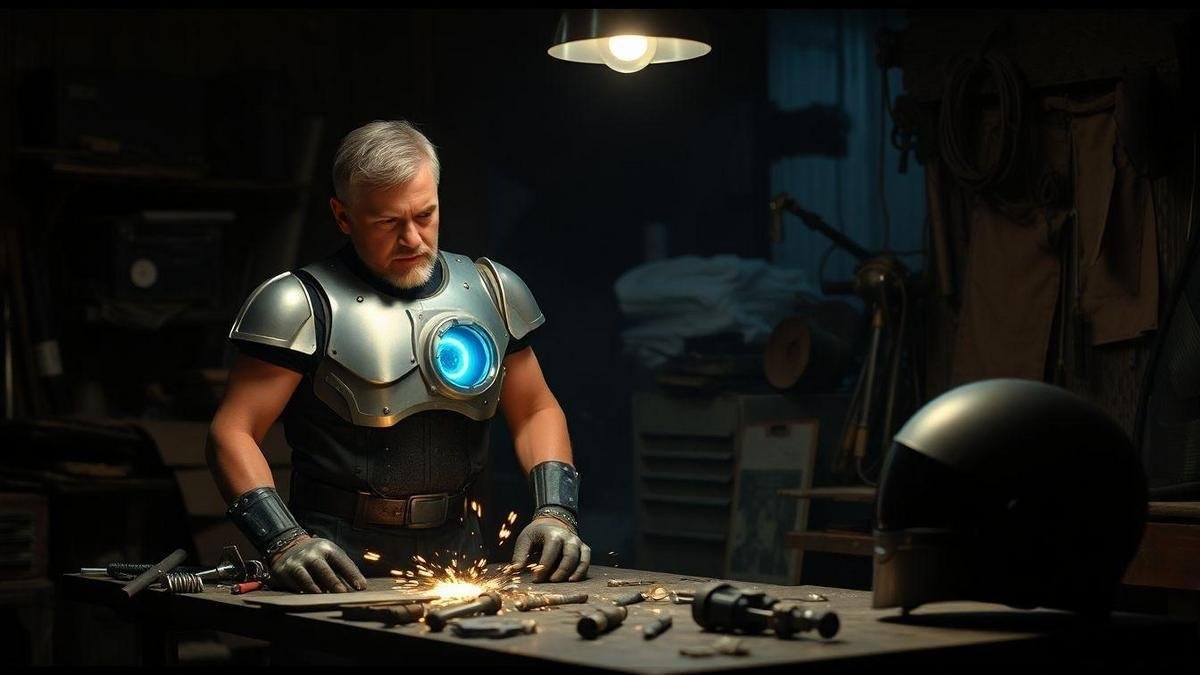
How the origin and tech start the Iron Man transformation
The origin: capture and the first suit
Tony falls from playboy to prisoner—both comics and the MCU use capture as the spark. The weapons-maker wakes to a broken world with shrapnel near his heart. A fellow captive, Ho Yinsen, helps him survive. Together they build the crude first suit to escape.
Quick comparison:
| Aspect | Comics (1960s) | MCU (2008) |
|---|---|---|
| Captors | Warlord (Wong-Chu) | Ten Rings terrorists |
| Location | Southeast Asia cave | Afghanistan cave |
| Key helper | Ho Yinsen | Ho Yinsen |
| First suit | Mark I — crude iron armor | Mark I — scrap metal suit |
| Power source | Chest plate device | Arc reactor |
That ugly, slow Mark I proves a point: technology can save lives and harm them if misused. For a deeper look at how fictional inventions are framed in Marvel stories and why they carry ethical weight, consider how Marvel presents fictional technology.
And when the Mark I only barely manages lift and thrust, its limits echo the real-world puzzles explored in pieces on how flight works for superheroes.
Technology and morality: inventions force hard choices
Tech has two faces—one heals, the other harms. Tony learns this fast: weapons sold for profit end up killing civilians; advanced tech attracts enemies who pervert it; AI and automation raise questions of control and trust. These are concrete problems:
- Weapons profit becomes civilian harm.
- Innovation invites replication and misuse.
- Automation and AI shift decisions about control and trust.
Tony answers by changing his business and stepping into the armor himself—a promise to repair harms he helped create. The ethical tension between vigilantism, public accountability, and private innovation is the sort of debate explored in discussions about vigilantism and moral responsibility in comics.
What the suit taught Tony about limits and duty
The suit taught blunt lessons: limits—no armor erases pain or guilt; duty—power requires action.
| Lesson | Example |
|---|---|
| Limits of tech | Mark I barely flies and still needs human help |
| Human cost | Yinsen’s sacrifice shows the price of freedom |
| Responsibility | Tony stops selling weapons and builds better tools |
| Need for others | Allies like Pepper and Rhodey matter |
Beyond making him strong, the armor raises design questions about function versus appearance—how a costume must perform in life-or-death situations, a topic related to the functionality vs style debate in superhero costume design. And the importance of team, logistics, and everyday support around a hero is echoed in explorations of a day in the life of a superhero beyond battles.
The suit is a tool and a burden: it grants strength while making Tony a target. That mix forces decisions about who he protects and how far he’ll go.
How to track Tony Stark’s redemption arc from playboy to protector
Character evolution across comics and films
Tony’s shift reveals itself in moments that change his choices: origin, public crises, and personal sacrifice.
| Medium | Key Beat | What it shows |
|---|---|---|
| Comics (e.g., “Demon in a Bottle”, “Civil War”) | Personal crisis, public accountability | Addiction, guilt, then responsibility |
| Films (Iron Man → Avengers → Endgame) | Origin, leadership, sacrifice | From playboy to team leader to martyr |
Track the arc as: trigger → choice → consequence. Those three steps reveal real growth.
Key moments of heroism and growth
- The cave origin: builds armor to survive—first moral shift.
- “Demon in a Bottle”: confronts addiction and accepts help—an episode whose legacy is discussed in pieces on the impact of “Demon in a Bottle”.
- “Civil War”: moral and leadership conflict; accepts consequences.
- Iron Man 3: confronts fear and trauma—shows vulnerability.
- Avengers: Endgame: final sacrifice proving protector above self.
Each moment moves him from self-serving choices to choices for others—behavior changes, not just rhetoric.
Why redemption and responsibility are central
Tony starts with power and ignores cost; responsibility matters because his tech affects many lives.
- Cause: builds weapons and tech.
- Effect: feels guilt and must repair harm.
| Why it matters | Example |
|---|---|
| Moral growth | Admits fault and changes actions |
| Story tension | Guilt forces tough choices |
| Emotional payoff | Sacrifice feels earned |
His journey mirrors real-life choices: make mistakes, accept them, and act to fix them. These themes—how creators respond to harm their inventions cause—are part of broader ethics conversations captured in analyses of fictional tech and its consequences.
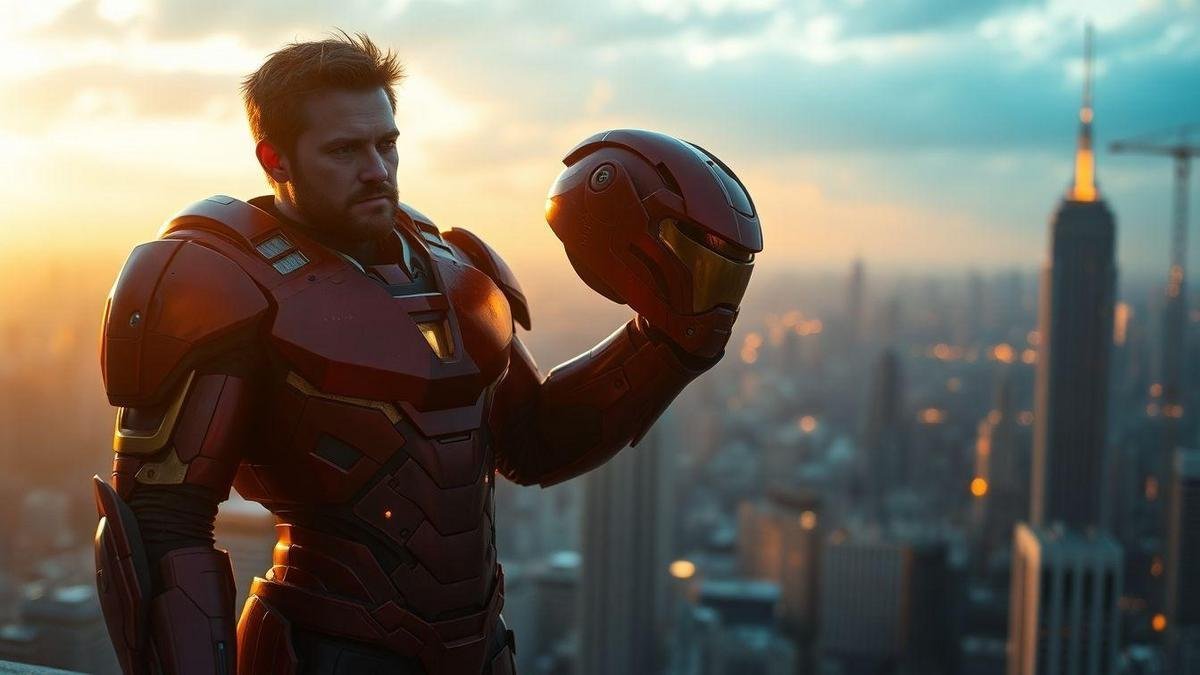
Why Iron Man’s change reshaped superhero character development
Tony Stark’s journey from playboy arms dealer to responsible protector created a new mold for heroes. His arc made stories ask tougher questions about accountability, technology, and personal growth. Writers and audiences began to care about what a hero does when the suit comes off.
| Phase | What you saw | Why it mattered |
|---|---|---|
| Playful inventor | Flashy parties, weapons sales | Charm without responsibility shows limits |
| Moment of crisis | Kidnapped, sees harm caused | Guilt turns into action |
| Protector | Builds clean tech, defends people | Heroes become caretakers of consequences |
Beyond character beats, this shift changed visual storytelling and fight design—how stakes are shown in panels and action sequences is analyzed alongside the character work in discussions like how fight choreography plays in comic panels.
An Iron Man character study shows new moral roles for heroes
Tony models that being brave also means changing systems and owning mistakes.
- Power comes with policy: fix what you break.
- Public accountability: choices have audiences and victims.
- Genius mixed with regret makes him a teacher, not just a fighter.
Use his story to evaluate other heroes: do they own mistakes? Do they change systems or only fight?
The phrase “Iron Man’s Transformation: From Playboy to Protector” in culture and tech debates
The arc—build a weapon, see its harm, then build a shield—became shorthand in discussions about ethics. The label Iron Man’s Transformation: From Playboy to Protector is now used in panels, classrooms, and articles when debating responsibilities of engineers, startups, and governments.
- Tech leaders face Tony-like questions: should this exist, who will use it, who bears the cost?
- Filmmakers use the arc to dramatize secrecy, profit, and consequence.
- Ethicists invoke it in debates on weaponization and safeguards.
The phrase functions as a mirror: does a device solve a problem or create a new one?
Spotting Tony’s legacy
- Comics: more post-mistake redemption arcs.
- Movies: tech shown as moral puzzles, not just gadgets.
- Tech debates: earlier ethics reviews and public safety conversations.
Once you see this fingerprint, it shows up again and again.
Conclusion
A playboy becomes a protector. The origin—that cave and crude suit—was the spark. Technology showed two faces: a tool that heals and a weapon that wounds. The suit became both shield and mirror, granting power while revealing responsibility.
The lessons are clear: limits matter; duty beats pleasure when lives are at stake; redemption is earned step by step. Tony’s arc reshaped expectations for heroes and influenced how technologists answer moral questions. That legacy appears in comics, films, and conference rooms where engineers ask, Should we build this?
If this resonated, dive deeper at https://heroandvillainworld.com.
Frequently Asked Questions
Tony’s capture and survival—building the first suit—forced him to confront the harm his work caused.
He abandoned reckless parties and refocused on work that protects people, prioritizing responsibility over profit.
His capture by enemies and the creation of the Mark I suit—seeing civilian harm firsthand forced his rethink.
Both: more responsible tech and a softer heart grow together—innovation paired with conscience. For how stories treat that mix of technology and ethics, see analyses of fictional tech in Marvel.
Own your mistakes, change systems you helped break, and let purpose replace pleasure. For related comic-era context and glossary terms, visit the comics glossary.
